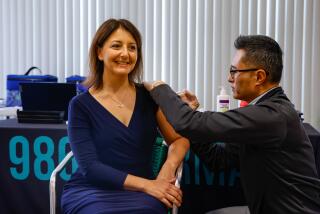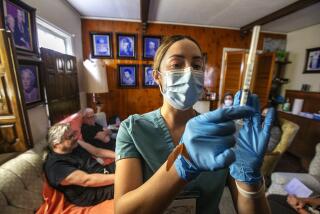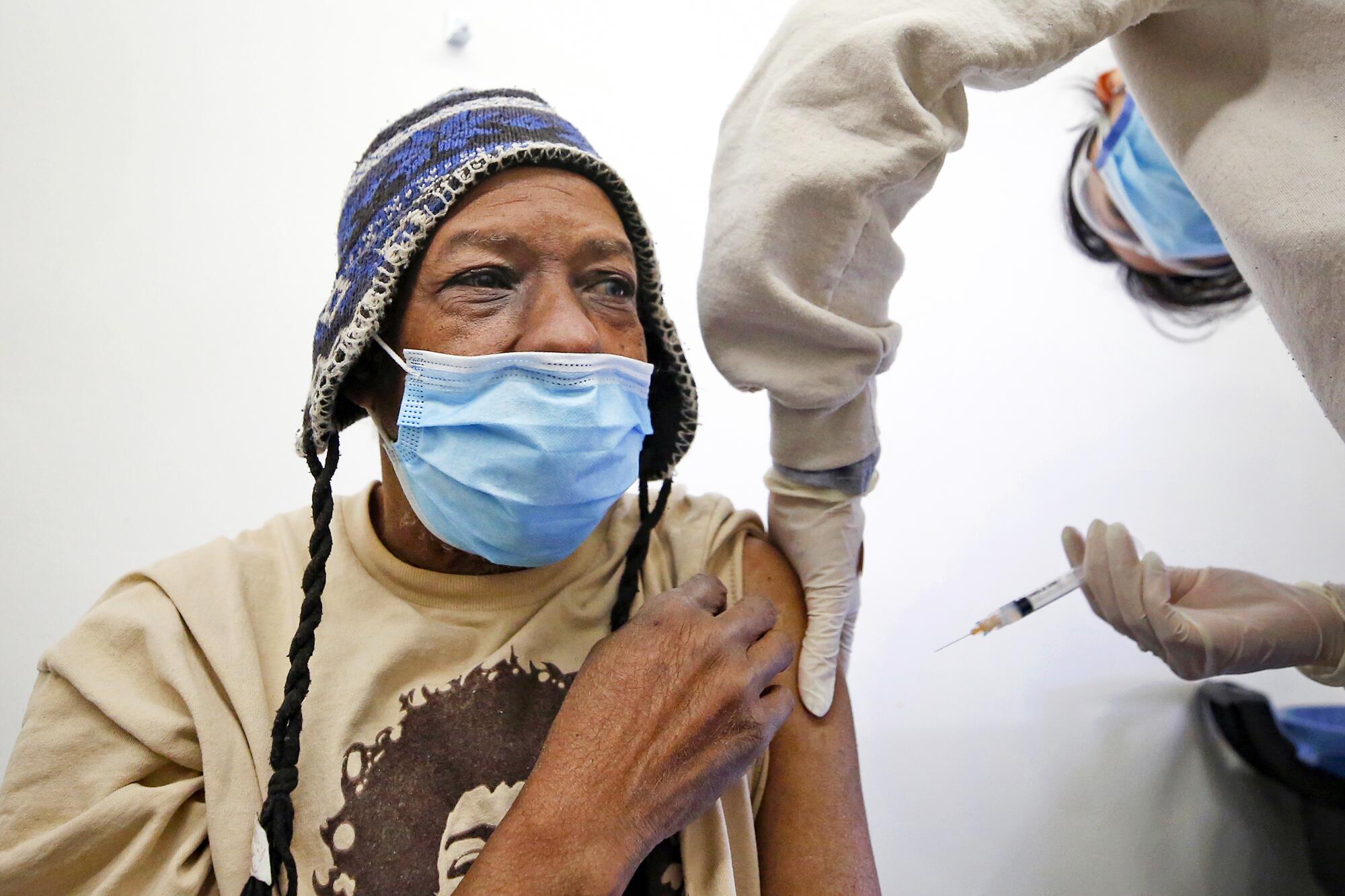
- Share via
For Lance Curtis, the journey to receive the COVID-19 vaccine began with a phone call from Los Angeles Christian Health Centers.
Doctors and nurses had culled a list of nearly 900 homeless people they wanted to vaccinate. Their outreach workers walked the streets of skid row preaching the gospel of Moderna’s two-shot salvation.
And they sought out people in the community’s large shelters to make sure they got pricked.
The goal was to offer a lifeline to one of Los Angeles’ most vulnerable and hard-to-reach populations. But the effort to vaccinate the homeless population and the skid row community, which is just getting underway, is fraught with obstacles.
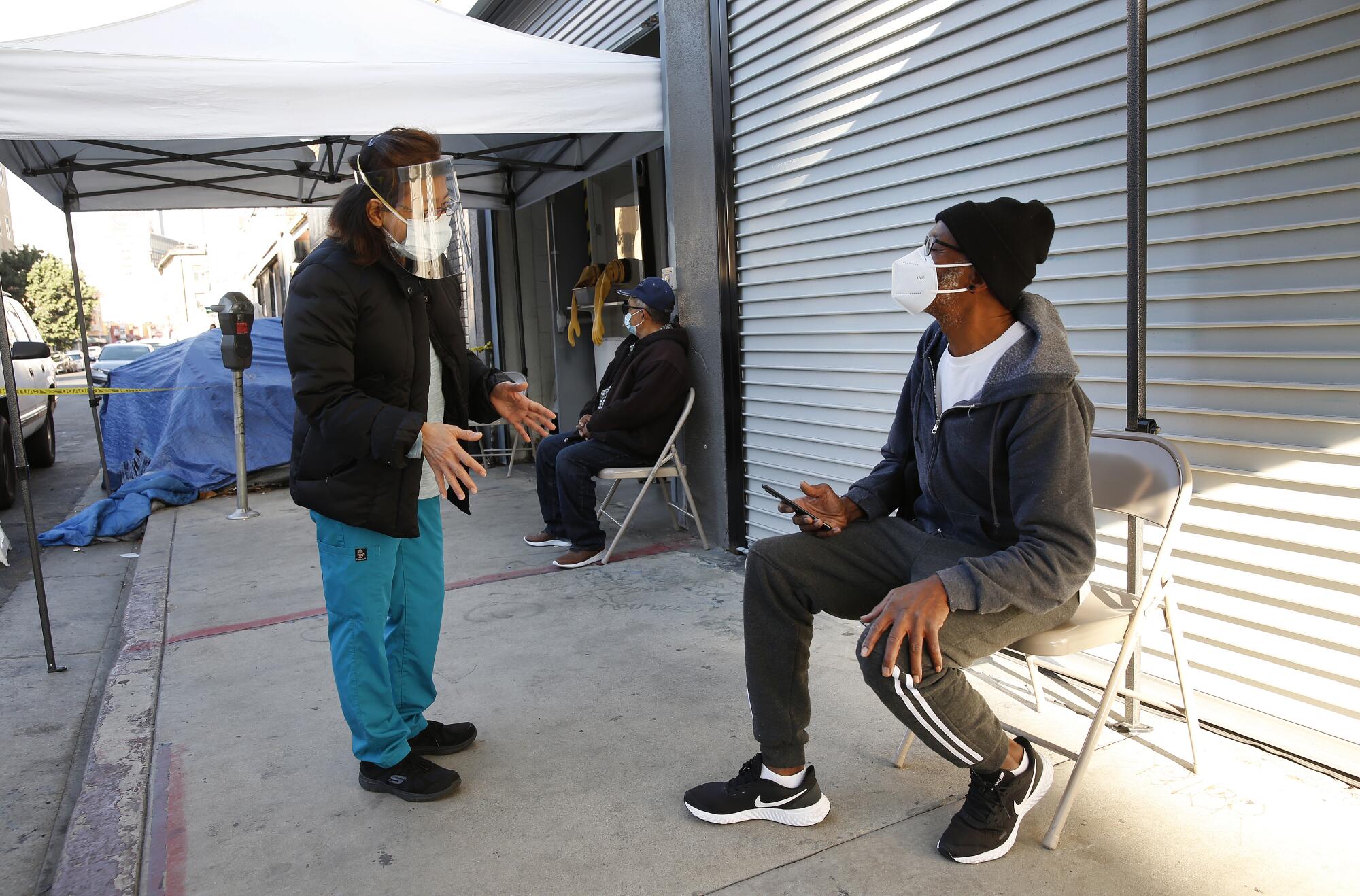
A transient population is, by its nature, a moving target. It includes many people who are suspicious of authority, and many who are specifically suspicious of the vaccine. And the vaccine itself in limited supply, has to be kept frozen, can’t be shaken while in the vial, can’t be in direct sunlight and must be injected within several hours of being defrosted. All that has complicated a difficult and unequal process.
Still, for Curtis, it was a day to celebrate. The 65-year-old resident of a single-room-occupancy building on skid row sat in a Jimi Hendrix shirt beside his friend and neighbor Cornelius Kincy, 69. Curtis played air drums — he practices on pads in his room for at least two hours a day — while Kincy harmonized and sang songs by the Spinners.
“When I was seeing on the news these shots being given out at Dodgers Stadium, I was wondering how I am going to get me that,” said Curtis. “I don’t have a car. I don’t drive.”
When he got the call, he told Kincy they should go.
“Curtis came to me and said, ‘Let’s go get that shot.’ They told us we’re not going to die. We’re not going to throw up. We’re not going to get the runs,” Kincy said.
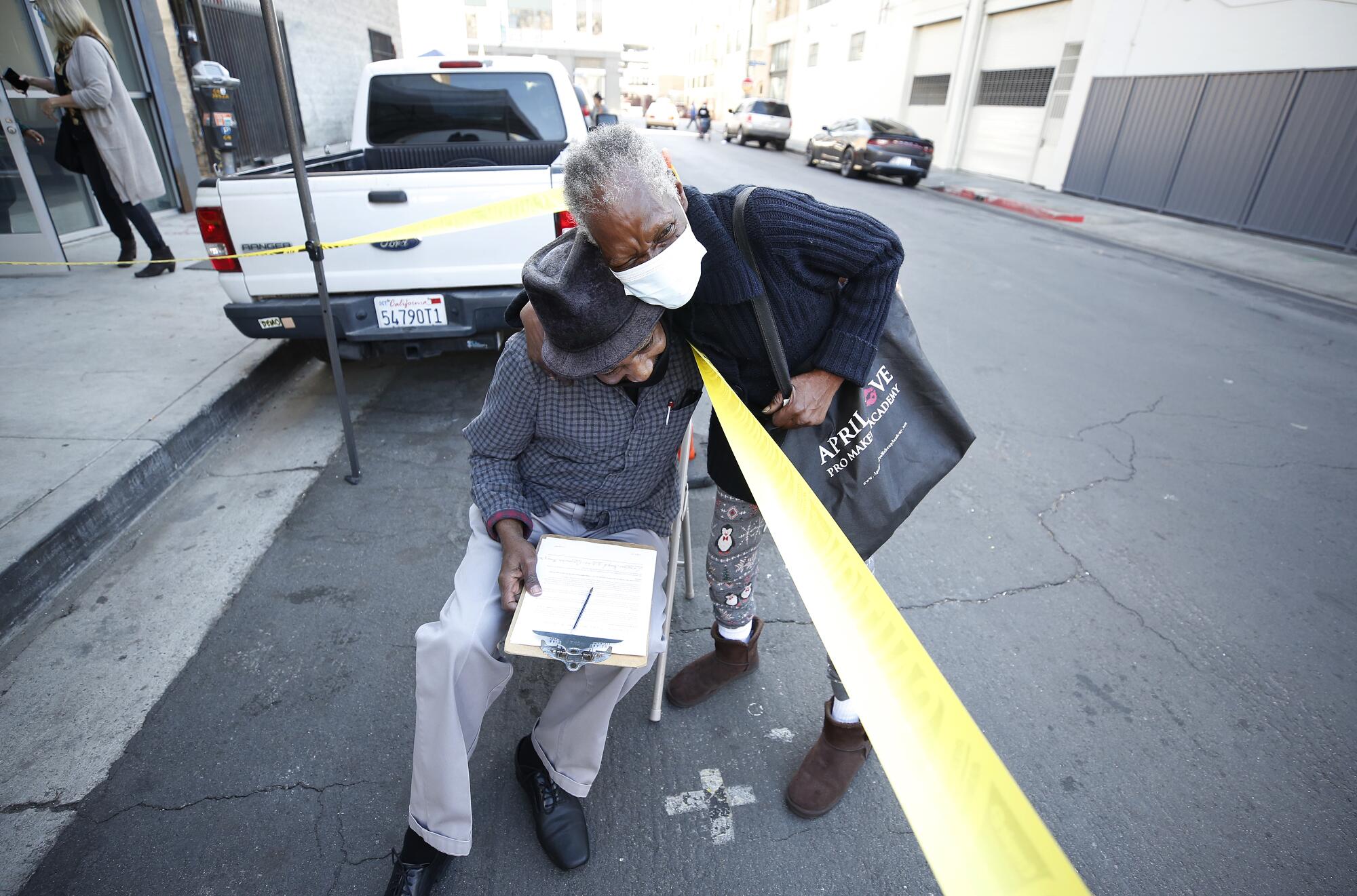
That’s what nurses from the clinic spend a lot of time working through — concerns that the shot will get people sick. Staffers said they try to convey to patients that they too received the vaccine and can testify to its limited side effects.
After Kincy and Curtis received their first doses and were told to come back in a month, they had one more question.
“Can we have a couple of beers?” Kincy inquired. “Will that be a problem?”
Assured it wouldn’t, they headed to the store after waiting 15 minutes to make sure there weren’t unforeseen problems.
For nurses and doctors who treat the homeless, it was a great relief to receive these doses — even if they’re not even close to enough to protect all of L.A. County’s roughly 66,000 homeless people.
At Los Angeles Christian Health Centers, the staff got the news on a Friday that the vaccine would be coming. On Tuesday, 18 seniors walked over from the Union Rescue Mission to be vaccinated.
The next day, five seniors from the L.A. Mission walked over to be given a dose, followed by 10 people from the Midnight Mission.
Still, the clinic is limited by the amount of vaccine the county can provide. Just last week, Los Angeles Mayor Eric Garcetti said some of the large vaccination sites managed by the city would need to close temporarily because of a lack of supply.
“I can’t tell you how I happy was when we got the news,” said Shani Welcome, who manages the Los Angeles Christian Health Centers’ skid row clinic.
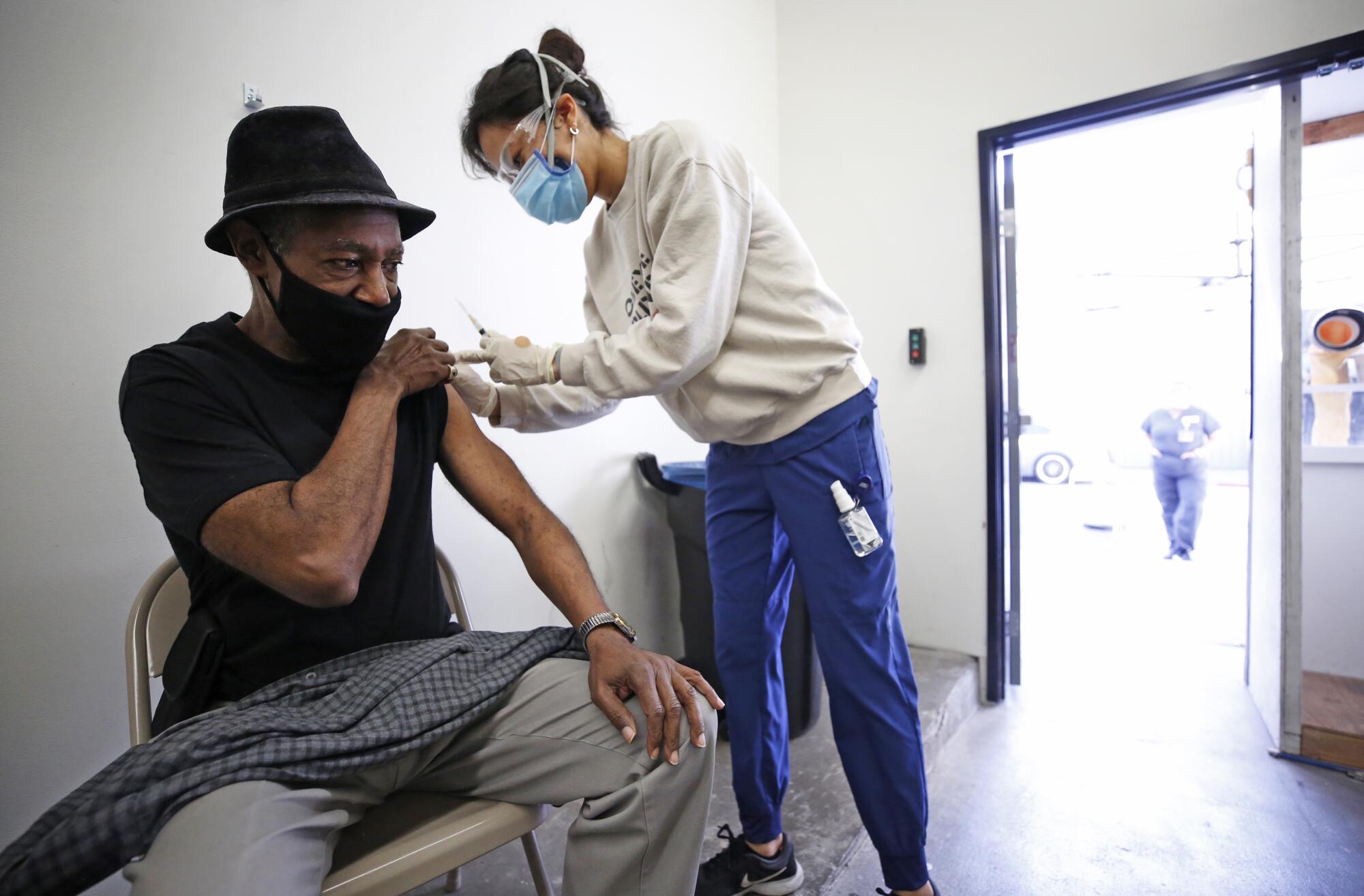
The clinic is obtaining just 100 doses per week for its six clinics across Los Angeles County, which serve thousands of clients, including the skid row community. The Los Angeles Department of Health Services’ efforts to get as many doses out as possible isn’t faring much better.
It is receiving 400 to 500 doses per week for the homeless population and trying to be strategic about where best to dispense them. Shelters have been a nexus of outbreaks, and outreach workers, along with medical providers, have attempted to find the most vulnerable people. They have also focused on encampments that have experienced multiple outbreaks of the virus.
The challenge is two-fold: getting a very fragile Moderna vaccine to hard-to-reach locales and working with people who have had negative experiences with outreach workers and police, and thus have mistrust in government. Robin Petering, a social worker, homeless advocate and researcher who regularly works with homeless people in Los Angeles, said it’s smart to give out the vaccine alongside other services such as healthcare, housing outreach and food distribution.
Petering also said she has been surprised by how many homeless people she’s worked with who are hesitant to get the shot.
“I was, like, personally shocked at how negative their reactions towards the vaccine was,” Petering said.
At this stage, she said it’s essential that homeless people — who often have health conditions that place them at greater risk — be prioritized more than they are now. She added that specific public health messaging should be created for the homeless population to overcome whatever lingering distrust might exist.
Although Department of Public Health officials have said they plan to focus on hotels that are being rented for homeless people, there doesn’t appear to be any effort to prioritize people on the streets, aside from those who otherwise qualify because of age.
The challenge of a limited supply and a hard-to-reach population was on full display in Leimert Park recently. A large, trash-strewn homeless encampment that hugs Leimert Plaza Park’s fence had been the site of several outbreaks since the pandemic began.
It was there that health officials set up two canopies and folding tables. At about 8 a.m. — two hours before they started giving shots — Sieglinde von Deffner, L.A. County skid row coordinator for the DHS, and another outreach worker fanned out into the neighborhood. They knocked on the doors of RVs and bent down on the pavement to speak with those who had been sleeping on the sidewalk.
Although the vaccine was the prize, they often lead with the promise of Oreos, a cup of juice and a chimichanga.
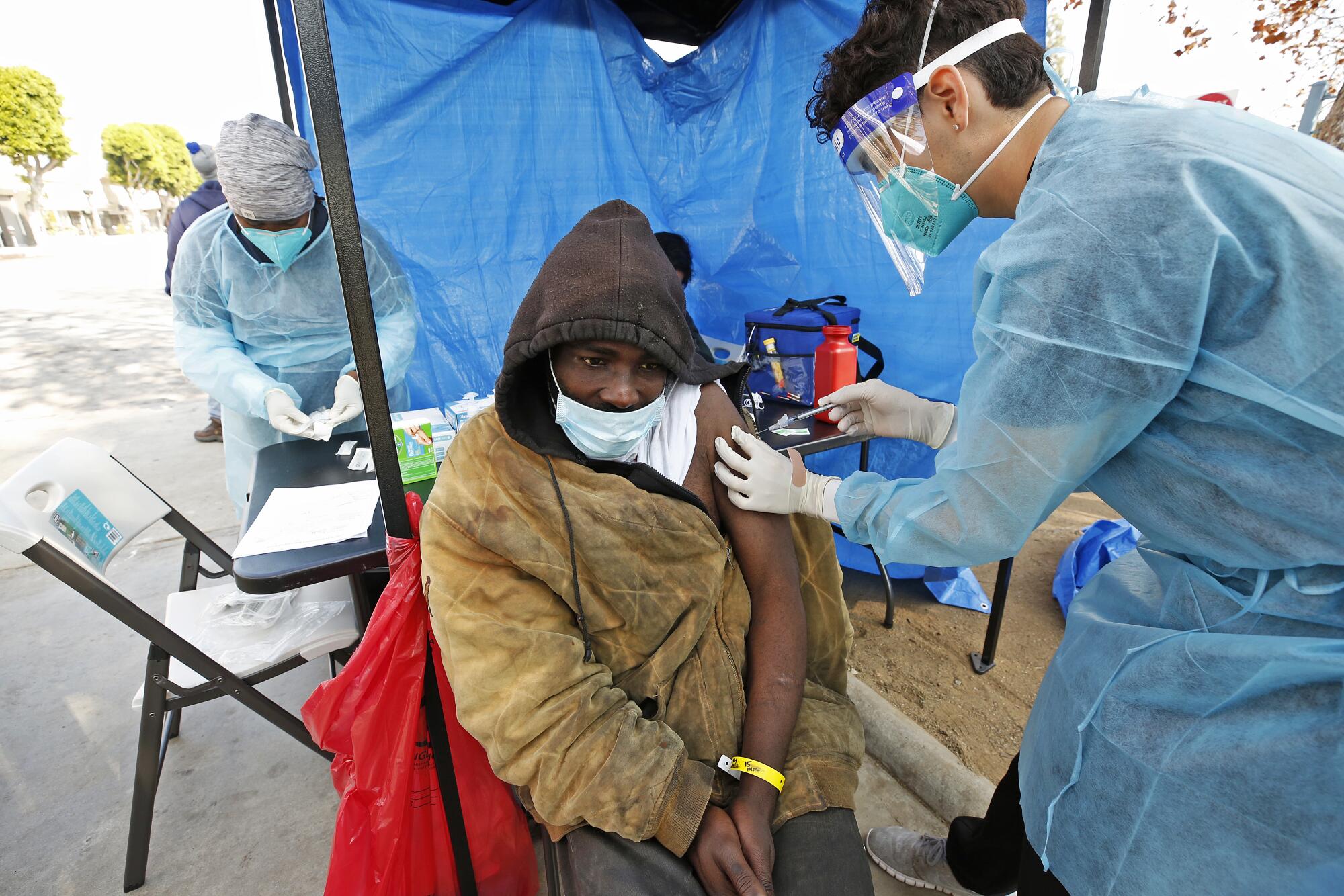
Von Deffner found Kerry Cahee, 34, sitting on the street in a dirty yellow jacket with a mask over his face and three cigarettes by his side. He said he’d been homeless for six months and had slept in a nearby public bathroom the night before.
Von Deffner patiently described to him why he needed the shot and promised to walk him to the front of the line so he didn’t have to wait.
“We’re trying to protect you so you won’t get your family or friends sick,” Von Deffner told Cahee.
They only had two vials and what they believed was 20 doses to distribute. Von Deffner joked that her job would be easier if she could hand out beers.
“If we had more vaccine, we could be doing this at multiple locations all across the county, all at the same time,” said Dr. Absalon Galat, who is helping manage and coordinate the vaccination drive for DHS.
Galat noted that Leimert Park is an epicenter of Black culture and there was value in picking a visible location where people could see the shots being distributed. Throughout the morning, people wandered by to ask what they were doing, allowing medical professionals to make the pitch for vaccinations.
“Multiple people have referenced the Tuskegee trial today,” Galat said, citing the infamous program of medical experimentation that exposed Black men to syphilis without their knowledge.
Von Deffner succeeded in walking Cahee, the homeless man, two blocks to the park where he sat at a folding table, answered some questions and filled out a form.
Then he walked off.
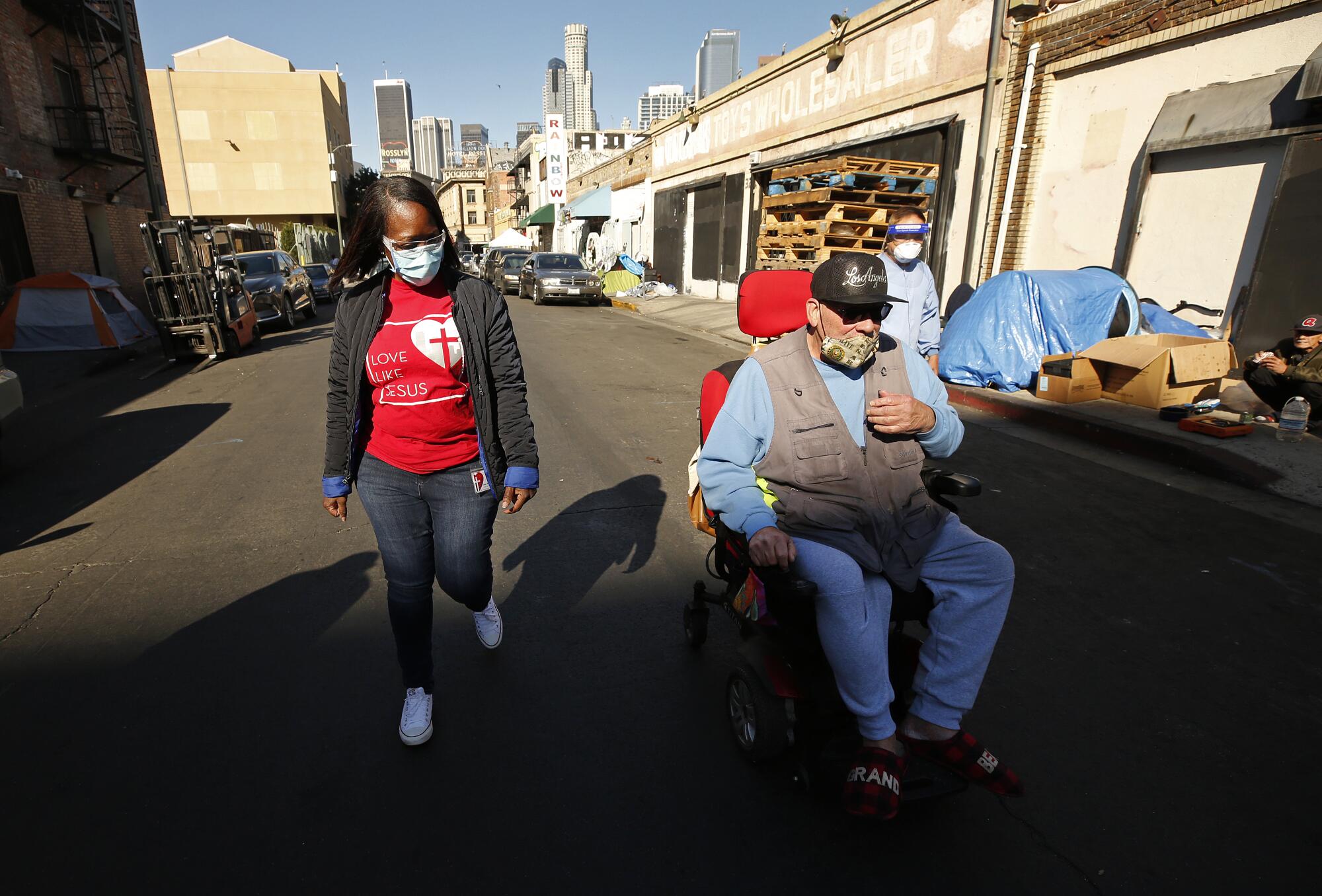
Von Deffner chased him down. He hadn’t received the shot yet. She handed him a large cup of juice and a bag full of food and clothes.
At another folding table in the shade, a medical technician wore thick gloves and gently rolled a vial of the Moderna vaccine between his hands to warm it up. Once it was liquid, he monitored a thermometer to make sure it didn’t get too warm. That would ruin the doses as well.
Another nurse carefully pulled a dose into a syringe as others stared intently.
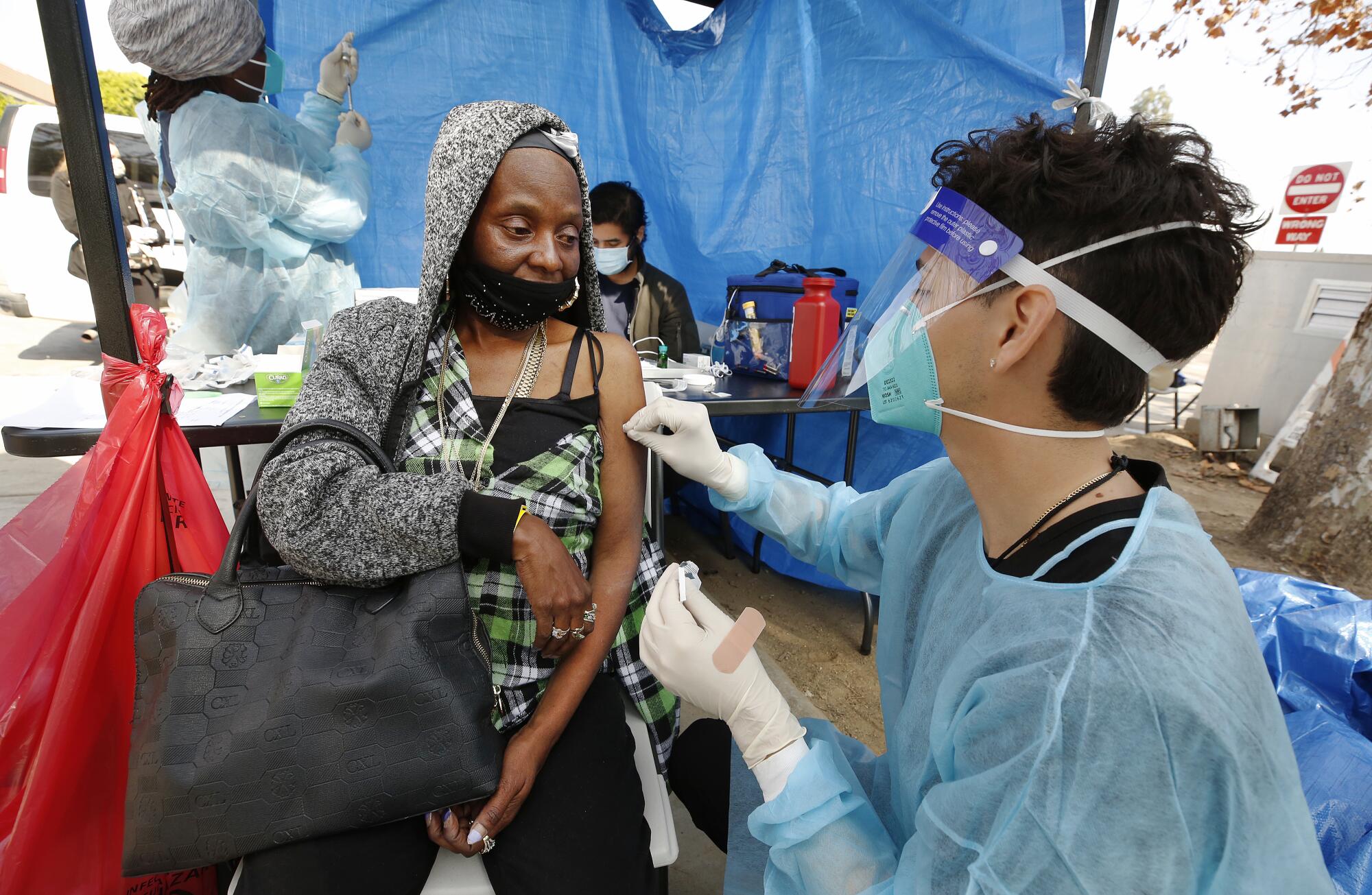
Some of the vials had enough to produce an extra shot. Today, they were lucky. They were able to inject 22 doses.
Doctors and outreach workers spoke longingly about Johnson & Johnson’s single-shot vaccine, which could be approved by the U.S. Food and Drug Administration in a few weeks. It could be a game changer for their work.
Finally, it was Cahee’s turn. A nurse told him to lean back and relax. Then the needle was in his arm. He grimaced momentarily.
“It stung, but I’m fine,” he said.
After a 15-minute wait, during which he scarfed down the chimichanga, Cahee walked off with his bag. His next appointment is in a month, and Von Deffner said she’d be back to find him.
And if she can’t?
“At least he got one dose,” she said. “Some protection is better than none.”
More to Read
Sign up for Essential California
The most important California stories and recommendations in your inbox every morning.
You may occasionally receive promotional content from the Los Angeles Times.
